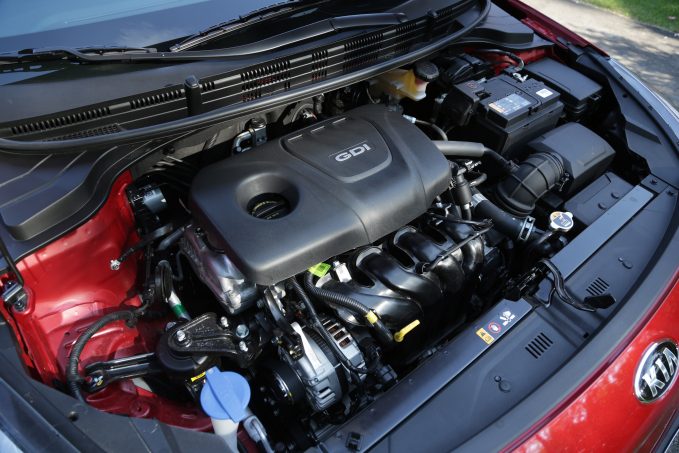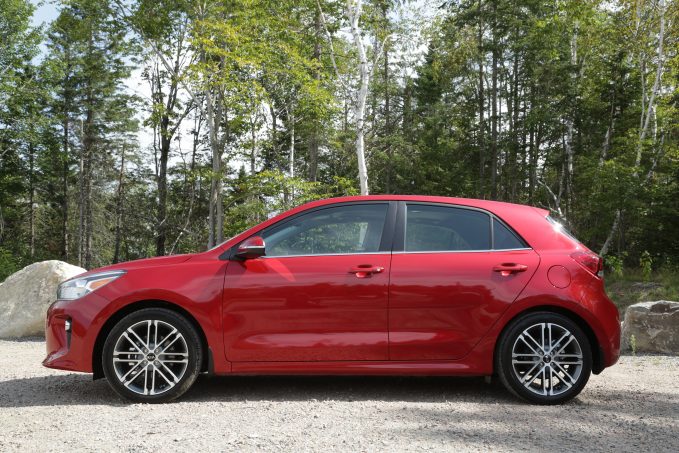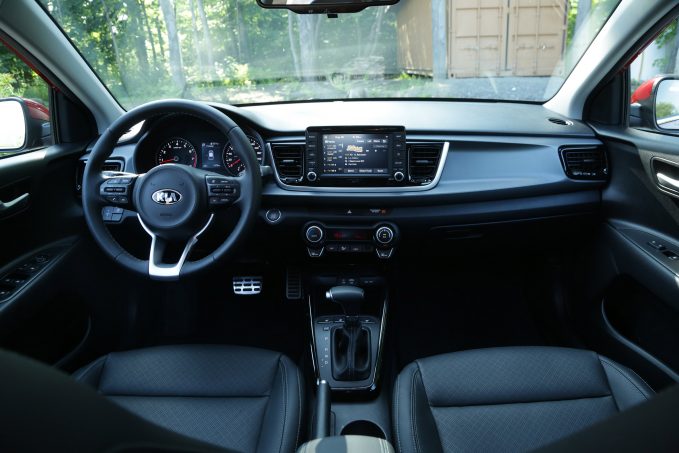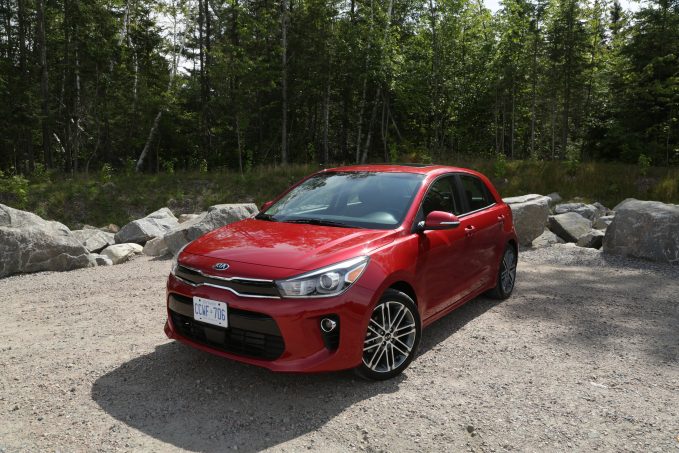The stylish Kia Rio has undergone a number of important changes for 2018, all designed to make it more refined, upscale and high-tech.
A few of these changes seem a bit puzzling at first, but an in-depth test reveals that the subcompact maintains its status as an affordable and stylish hatchback.
Kia doles out the goods for every Rio buyer out there. Things like air conditioning, power locks, and a touchscreen infotainment system are among the long list of standard features for base models. It might seem like all cars these days have that stuff, but competitors like the Chevrolet Spark and Nissan Versa don’t come standard with a lot of those features.
In Canada, the Rio even comes standard with heated seats and a heated leather-wrapped steering wheel, which is a huge deal considering the $15,000 base price tag in that country. Higher trim models get a telematics system in addition to Apple CarPlay and Android Auto, all in an effort to catch the eyes of younger buyers. Fully loaded, the car will slide in around the $25,000 mark in Canada (U.S. pricing has not yet been announced).
Making a High-Tech Impression
Kia’s UVO eServices telematics system an important part of the Rio experience. It allows for remote starting of a vehicle via an app or website, and logs the location of the car in case you forget where you parked (or if parents wanted a quick peek at where the kids are). In addition to those features, the car can send the owner a vehicle health report and onboard diagnostics that help drivers budget for future maintenance and repairs. And like many other systems out there, the UVO telematics system also provides live emergency support and roadside assistance. Reading all that probably cocked an eyebrow, but the other eyebrow will join upon learning that all that service will be free for five years. That’s certainly one way to make a statement in this field of low-cost, typically humdrum economy cars. Higher trim level models even get an automatic emergency braking system.
But packing all that tech into a low-cost car might have come with some compromises. Namely, there are a few areas where the new Rio seems to have regressed from the one that came before it.
Improvements Under the Hood?
Under the hood, for example, the 1.6-liter engine has been retuned to deliver 130 horsepower and 119 pound-feet of torque, or approximately 8 fewer ponies and 4 fewer torques than before. What used to be a class-leading powerplant is now more in line with its rivals. The changes to the powertrain are certainly worth mentioning, though, as torque seems to come on sooner in the rev range, providing a more immediate feeling of power. That’s not to say that the car is particularly fast, but it’s plenty usable in city and suburban routes and adequate on the highway.
ALSO SEE: Chevrolet Spark Review
Paired with the engine is a six-speed automatic or manual transmission. We tested the automatic during this first drive and can confirm that it definitely changes gears automatically. There’s nothing positive or negative to discuss with this transmission — it does the job and gets out of the way, which is a good thing. The reduction in power seems to have benefited the Rio’s fuel economy ratings, as it now earns 32 mpg in combined driving situations, a 2 mpg improvement.
New Platform, Old Braking Tech
That fuel economy improvement is curious, however, because the Rio not only packs less horsepower than before but it also put on a bit of weight. Don’t blame the new platform, which is longer and wider and uses 32 percent more advanced high strength steel than before, which improves safety and should make the car lighter. Apparently, packing in all the extra features is to blame for the roughly 200-pound delta from the outgoing version of the car.
Another big step backward for the Rio: it now comes standard with rear drum brakes. At first glance, this isn’t a huge deal, as many subcompacts use drums for the rear wheels, but the 2017 model has discs at all four wheels. Buyers can still get rear disc brakes on the Rio, but that comes with a more premium trim level.
On the road, the Rio is responsive and obedient. It doesn’t feel flimsy or insignificant on the road. Other motorists also took note of the attractive styling as the higher trim model packs LED daytime running lights, chrome accents, and nicer alloy wheels.
Clean Interior with a Lot of Space
There’s definite appeal to the Rio’s looks and the interior is equally sleek. Fit and finish is pretty good considering the modest cost of the subcompact, and while there’s clearly a lot of hard plastics to be found in the cabin, there seems to be an equal amount of soft-touch materials as well. It’s all about balance, right?
Space is excellent, as people riding in the front shouldn’t be worried about rubbing shoulders or fighting over the armrest. Passenger space has definitely improved, and there are about five extra cubic feet of storage behind the rear seats as well. Interestingly, the spec sheet states that the Rio has 32.8 cubic feet of storage with the rear seats folded down, which is a huge step backward from the 2017’s measurement of 47.1, but it turns out that Kia changed the way it measures the cargo space in order to provide a more realistic specification. And in real world usage, the car swallowed up all our equipment and luggage with ease.
The Verdict: 2018 Kia Rio Review
Kia has always been known to pack a lot of value in its cars and the new-generation 2018 Kia Rio continues that trend, offering a lot of content, technology, and features in a car that boasts a really low price tag. Such a strategy will certainly help this subcompact succeed in the midst of the crossover-mania that’s afflicting car buyers today.












